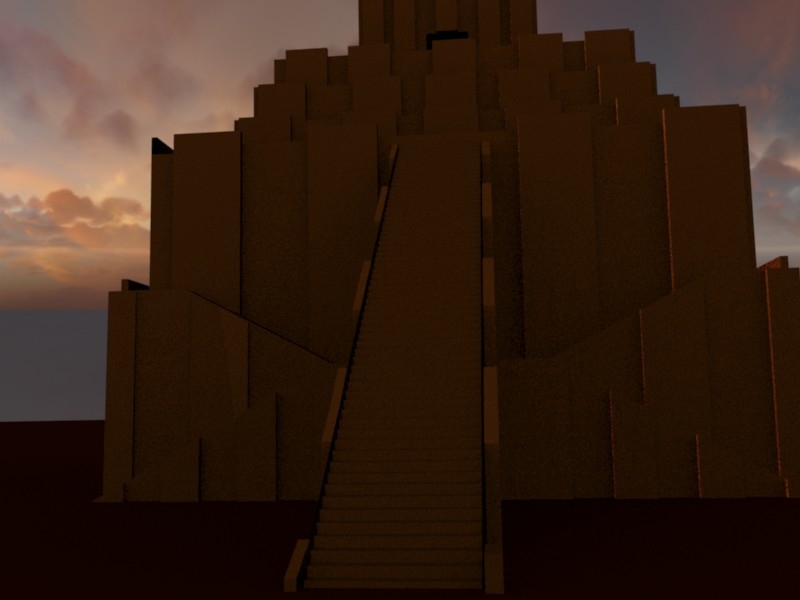


And while some people may seem content with the story as it stands, our view is that there exist countless mysteries, scientific anomalies and surprising artifacts that have yet to be discovered and explained. This ziggurat was a massive structure that contained not only temples, but also several palaces.Īt Ancient Origins, we believe that one of the most important fields of knowledge we can pursue as human beings is our beginnings. In the Iranian province of Khuzestan, for instance, there is the Choga Zanbil, which is generally regarded to be one of the best preserved ziggurats in existent. Nevertheless, a number of ziggurats have survived till today. Chogha Zanbil: an Unfinished Elamite Site with a Unique Ziggurat.Buried Beneath the Sand, The Ziggurat of Jiroft May be Largest and Oldest of its Kind in the World.His untimely death in 323 BC meant that his plans were never realized. When he returned, however, he observed that no progress had been made, and had the structure demolished so that a new ziggurat could be built in its place. Before leaving the city for the East, he issued instructions to have the ziggurat rebuilt. The Etemenanki, for example, was in ruins when Alexander the Great entered Babylon. Over the millennia, many of Mesopotamia’s ziggurats have been demolished. During the Neo-Babylonian Empire, for instance, Nebuchadnezzar II, who reigned between the 7th and 6th centuries BC, had the Etemenanki rebuilt. The building of ziggurats by secular rulers continued later on as well. Through the construction of ziggurats, kings were demonstrating that their power extended to the religious sphere as well. During the 3rd millennium BC, there was political tension between the temple, represented by priests, and the palace, represented by kings. Therefore, ziggurats were always commissioned by rulers of important Mesopotamian city states. The construction of such monumental structures required a large amount of manpower and organization. Remains of the ziggurat and White Temple in Uruk. On the top of the ziggurat there was a temple dedicated to one of the many Mesopotamian deities. As each level was added, the area of the platform decreased, and the sides sloped upwards. A number of terraces were added on top of this base. The base of a ziggurat was either square or rectangular in shape. What Was Life Like in Sumer, History’s First Civilization?.Inside Etemenanki: The Real-Life Tower of Babel.The White Temple and the Great Ziggurat in the Mesopotamian City of Uruk.For the ancient Mesopotamians, mud was considered to be the purest of substances, hence its use for the building of ziggurats. This means that ziggurats were solid, not hollow, structures. Generally speaking, the core of a ziggurat was constructed with mud bricks with an external layer of baked bricks for protection. ( Public Domain ) Ziggurat Architecture: Constructing a Mountain, Showing their Power Unfortunately, Etemenanki was demolished in antiquity. This structure is recorded to have soared to a height of 92 m (302 m).

The inspiration for the building in biblical tales is said to have been a Babylonian ziggurat known as Etemenanki (meaning ‘House of the foundation of heaven on earth’). It is interesting to consider that the biblical Tower of Babel, which was meant to allow humans to climb to the heavens, is believed to have actually been a ziggurat. This name is appropriate, considering that some ziggurats were towering structures. The word ‘ziggurat’ is derived from the Akkadian ‘ziqqurratu’, which has been variously translated to mean ‘mountain peak’, ‘rising building’, and ‘to build on a raised area’. Two famous examples of surviving ziggurats include the Great Ziggurat of Ur in Iraq, and Chogha Zanbil in Iran. In ancient times, each of the major city states in Mesopotamia had their own ziggurat, however many have been destroyed over the ages. They are identifiable structures most often associated with ancient Mesopotamian religion. With their massive terraces decreasing in size as the building rises, ziggurats can easily be called manmade mountains.


 0 kommentar(er)
0 kommentar(er)
